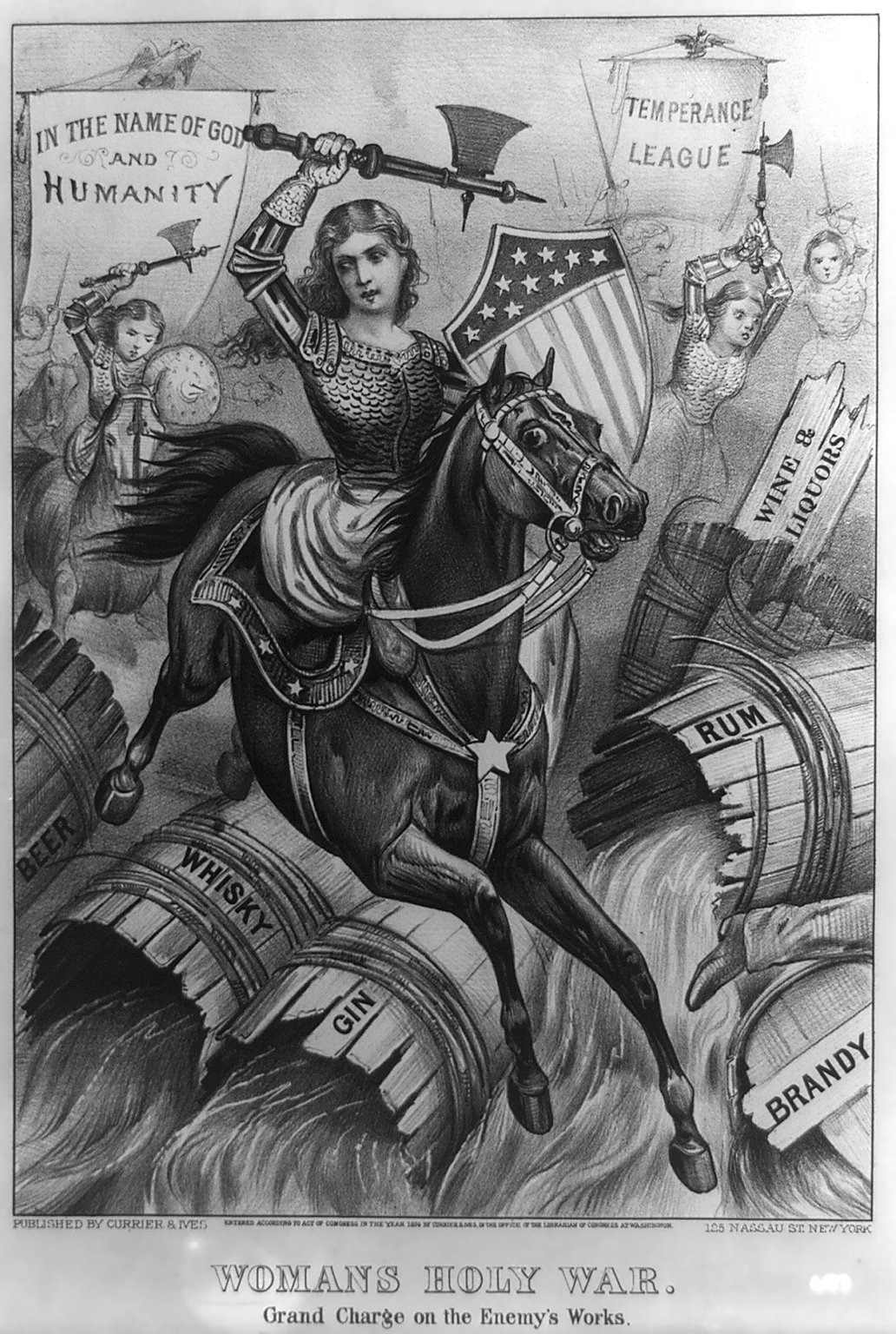By the turn of the century, Flatbush was a hotbed for political discussion. The temperance movement, which began in the early 19th century, grew more popular in the early 20th century. In Flatbush, there were several organizations focused on spreading the movement’s ideas. One of the most well documented groups was the Women’s Christian Temperance Union, or the WCTU. The WCTU transcribed meeting notes and announcements and posted them in the Eagle on a regular basis.[1] This group held many meetings within Flatbush, which highlights the importance of the location at this time. By January, 1920, because of groups like the WCTU, the Temperance Movement had gained enough support that Prohibition laws were passed nationwide.

Woman’s Holy War
Women in Flatbush were not merely focused on temperance, though. In the early 20th century, the women’s suffrage movement was gaining support. The Flatbush Political Equality League and the Bedford Leaguers were two active women’s suffrage organizations within Flatbush.[2] Parades were organized, national leagues were joined, and political representatives were put into place by these leagues, which helped sway the nation’s opinions in favor of the women’s right to vote. In February, 1914, some of Brooklyn’s suffragettes announced that they would be opening a school in Flatbush to specifically teach “suffrage theories and practice.”[3] The goal was to help teach everyday women how to give speeches at an affordable and accessible location. Though some Flatbush residents were against women suffrage, including some women, there was a very large group of supporters in Flatbush. In August,1920, women gained the right to vote nationwide.
[1] “Women’s Christian Temperance Union Notes,” The Brooklyn Daily Eagle, April 2, 1910.
[2] “A Column About Suffrage,” The Brooklyn Daily Eagle, October 5, 1912.
[3] “Brooklyn Leaders State Plans for New Suffrage School,” The Brooklyn Daily Eagle, February 8, 1914.
